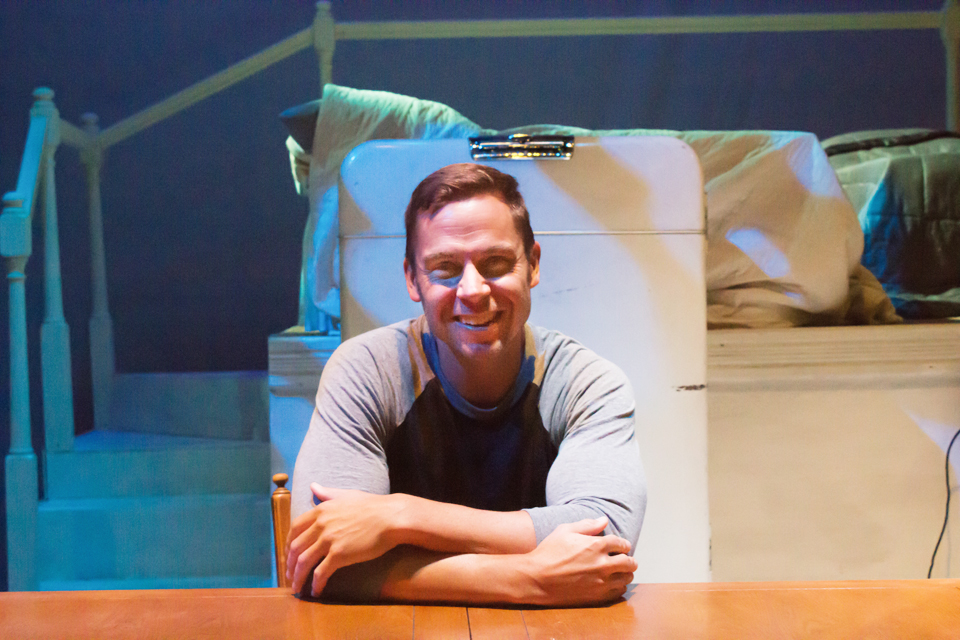Jessica Lincoln | Staff Writer
On Sunday, all eyes were on the quarantine doors. Children pushed to the front to look through the openings in the barricades, and people of all ages craned their necks to look for movement in the window. Suddenly, the doors opened, and out came the stars of the show: 13 Macaroni and Gentoo penguins parading their way down the path outside of the PPG Aquarium.
It was a good day to be a penguin. Temperatures were in the low 30s as they waddled past the crowds, enjoying the light snowfall and investigating the new faces. Later, the barriers were moved to form a circle, and the penguins played with one another, often mere feet away from their rapt audience.
They were outside because of Penguins on Parade, an event the Pittsburgh Zoo holds every Saturday and Sunday during the winter months, weather permitting. The event is free to zoo members and is included with general zoo admission.
The parade itself lasts for about 15 minutes. It starts at 11:30 a.m. sharp, although visitors are advised to come early, said Tracy Gray, the zoo’s media and public relations manager.
Visitors can call the zoo at 412-665-3640 or visit the zoo’s website to check for cancellations.
The day after the parade, I was taken behind the scenes to talk to penguin keeper Jessica Ries and find out more about what life is like as a penguin at the zoo.
When I arrived, I was introduced to Elsa, a female Macaroni penguin who was hatched in 2014. Like all of the zoo’s penguins, she wears bands around her wings for identification. And surprisingly enough, she was soft to the touch, allowing us to pet her on her back without resistance.
As Ries and I spoke, Elsa moved her head around, watching from every angle. She stretched, extending her wings and looking up before shaking herself out. She was standing on a tablecloth with an ice block underneath, and she seemed content as could be.
Macaroni penguins, named after an eighteenth-century style involving the placement of feathers in hats, are smaller than Gentoos. Both species are compact and streamlined with solid bones to let them “fly” through the water, according to Ries.
As of now, the zoo has 25 penguins, seven of which are Macaronis. It’s impossible to tell if a penguin is male or female without doing a blood test, so all of the penguins undergo one shortly after they hatch. Iggy, a penguin who hatched last spring, is a boy, Ries confirmed.
“We hand-feed them all individually,” Ries said, with three varieties of fish twice daily. The penguins swallow their fish whole, and they understand their schedules and can identify their keepers.
The automated lighting cycle inside the exhibit tells them when to molt their feathers, which they do once a year, and when to begin breeding season. As is common for penguin exhibits in this hemisphere, they run on an Arctic lighting cycle, since their native Antarctic cycle would leave the exhibit dark for most of the summer — the zoo’s busiest season.
Around March, they begin breeding season. Penguins mate for life, and they do so by presenting their partners with pebbles and building nests with them.
“We put piles of rocks all over,” Ries said. “We work closely with our animal health team throughout that time.”
Elsa was one of the first Macaroni penguins born at the zoo, and her keepers are hopeful that she might lay an egg this season.
As for Penguins on Parade, the penguins’ health is the priority.
“45 degrees is a safe limit for us,” Ries said. If temperatures are above that point, the event will be canceled, as announced on the zoo’s Twitter feed.
“It’s enriching for the penguins to go out and play in the snow and have that experience,” Ries said.
The parade is voluntary for the birds. Ries and the other keepers signal them when it’s time to leave, and around 10 to 14 of them typically join in. If any of them show signs of overheating, such as open-mouthed breathing, they are taken back inside.
Ries said the best part of the parade is “seeing the joy on children’s faces and adults’ alike.”
For Ries, working with the penguins is a dream come true.
“I knew right away that this was what I wanted to do and where I wanted to be,” she said. “They make me laugh every single day.”
She hopes that meeting the penguins and getting to know their “penguinalities” might inspire visitors to consider sustainable practices, like eliminating single-use plastics and buying sustainable seafood.
“I hope they’ll take a second in their day-to-day lives to think about how they can impact penguins in the wild,” she said



